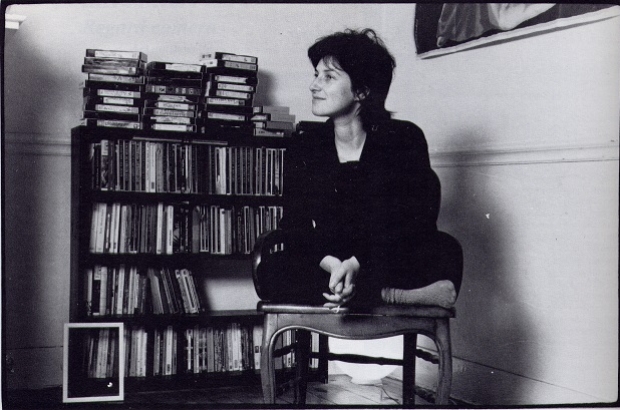- Daily & Weekly newsletters
- Buy & download The Bulletin
- Comment on our articles
‘Chantal Akerman. Travelling’: Major exhibition honours iconic Belgian filmmaker and artist
Since Chantal Akerman’s most famous film topped the British Film Institute’s acclaimed Sight and Sound poll in 2022, the late Belgian filmmaker has attracted global attention.
It was the first time that the decennial poll was dedicated to a woman. Jeanne Dielman, 23, quai de Commerce, 1080 Bruxelles, released in 1975, is hailed as a landmark feminist title. Running for almost three and a half hours, it’s not an easy watch; meticulously relating three days in the life of a widowed housewife who resorts occasionally to sex work to provide for herself and her son.
In her home country, Akerman’s stellar reputation has never wavered. Yet, Chantal Akerman. Travelling at Bozar is the first major retrospective dedicated to the multi-faceted artist, providing a total immersion into her singular universe via films, videos, installation and archive material. It’s aimed at enlightening her existing fanbase while introducing newcomers to her pioneering and experimental oeuvre.
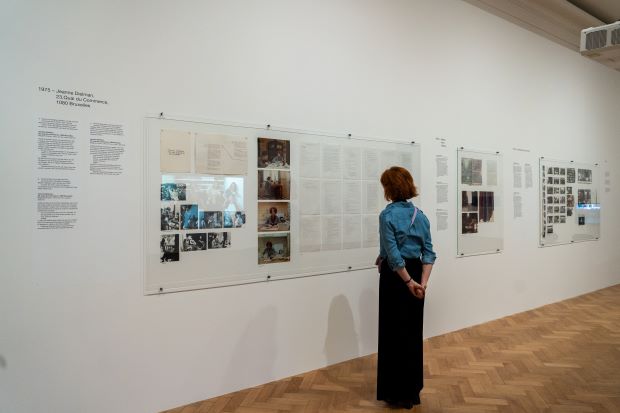
The exhibition is the result of a rare collaborative project between Brussels’ flagship arts centre, Belgian film archive Cinematek and the Fondation Chantal Akerman, set up by her sister Sylviane after her death in 2015. Curators Laurence Rassel, Céline Brouwers and Alberta Sessa have enthusiastically tackled the challenge of transforming a wealth of archive material into a coherent and chronological demonstration of Akerman’s creative process. While their intention was not to idolise her, the artist and filmmaker’s illuminating presence often shines through.
The title is a reference to the globetrotting that peppered her career, which turned principally around her home city of Brussels, the nearby cultural metropolis of Paris and New York.
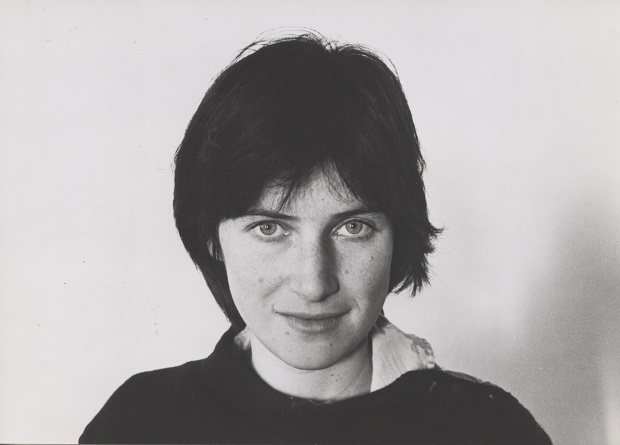
Born in 1950 to Polish Auschwitz survivors, Akerman decided to apply to the Brussels film school Insas after seeing Jean-Luc Godard’s anarchic Pierrot Le Fou. For her entrance exam, she filmed her mother Nelly and childhood friend Marilyn Watelet in Knokke and Brussels. The four 8mm films – a recent surprise find in the archives – open the exhibition with their flickering black-and-white images radiating youthful energy.
Akerman abandoned film school after a couple of months, but in her subsequent short, Saute ma ville (1968) - shown here in its entirety - she turns the camera on herself for a critique of the ‘feminine universe’. In the confines of her apartment, she laboriously completes various housework duties, before carefully duct taping the door, turning on the gas and exploding the domestic scene and herself in the process.
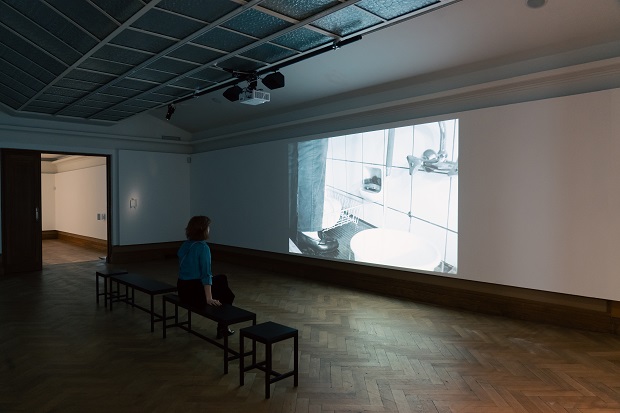
The TV sale of this film financed her travel to New York. Further experimentation ensued as she mixed with avant-garde filmmakers and artists, including Michael Snow and Andy Warhol. Akerman saw how they played around with structure, which inspired her own methods of expressing the passage of time and sensation of space in filming images.
Colour rushes from some of the films she made in the city are screened, including her first feature Hotel Monterey (1972). It’s a detailed exploration of the Manhattan welfare hotel and its surrounding urban architecture, filmed over 15 hours. In the unfinished documentary Hanging out Yonkers (1973), she details the rehabilitation of drug addicts. Her interest in marginal characters reflected her own Jewish and queer identity, although she eschewed stereotypes, including the title of feminist filmmaker. The streets of New York again make an appearance in News from Home (1977), serving as a backdrop to Akerman’s moving reading out of letters from her mother.
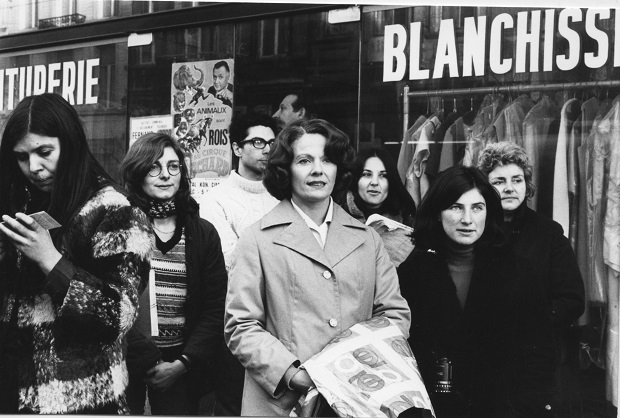
Alongside screenings and excerpts, exhibition rooms are lined with film scripts, annotated notes, photos and films stills, with many being shows for the first time. Among them are stills and the dialogue from her masterpiece Jeanne Dielman (pictured above), made when Akerman was 24 and in possession of little cinematic experience. It was also radical for its long and silent static shots of a woman carrying out domestic tasks in a real-time scenario that exposes the patriarchal repression of women.
A lesser-known aspect of her output is highlighted in some 20 video installations. From the mid-90s she created them by recutting her films, giving them a new spontaneity and blurring the boundaries between art and film.
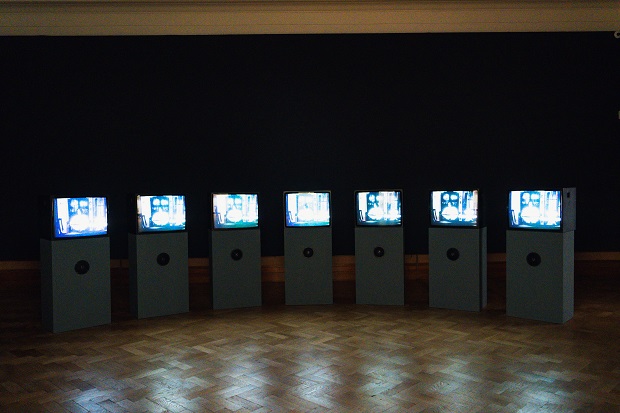
Travels stretched to eastern Europe, where she and a small crew drove from Brussels to Moscow to make From the East (1993). The slow silent journey captures landscape and people following the fall of the Berlin Wall. It had a second life as a large-scale gallery installation, From the East: Bordering on Fiction, presented here via 24 screen monitors. Scenes from Ukraine are all the more affecting 30 years on; a sad reminder of the region’s ongoing strife and tension.
The final exhibit is the installation Now, presented at the Venice Biennale in 2015. In a cacophony of sound, multiple screens relate war, death and the end of the world (pictured below). Here, as in all of Akerman’s installations, the intention was for an immersive experience.
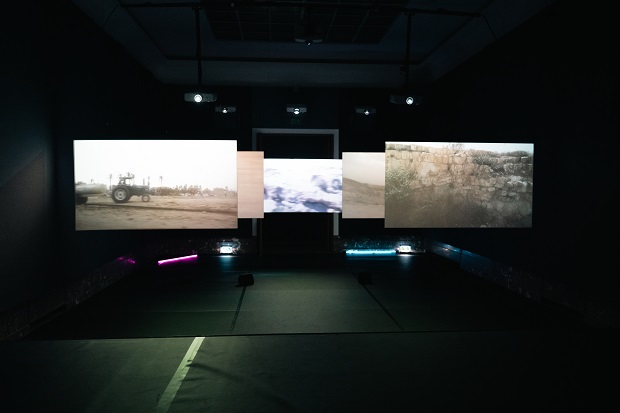
In one of the quotes by Akerman that adorn the show, she said: “I would like the viewer to have a physical experience of the time used in each shot. To have the physical experience of time unfolding inside you, of time entering you.”
Not only was this avant-garde for video art, her choice of subject matter was consistently prescient. Her final feature, No Home Movie (2015), was a melancholic video portrait of her mother, whose death contributed to Akerman’s depression and taking of her own life at the age of 65.
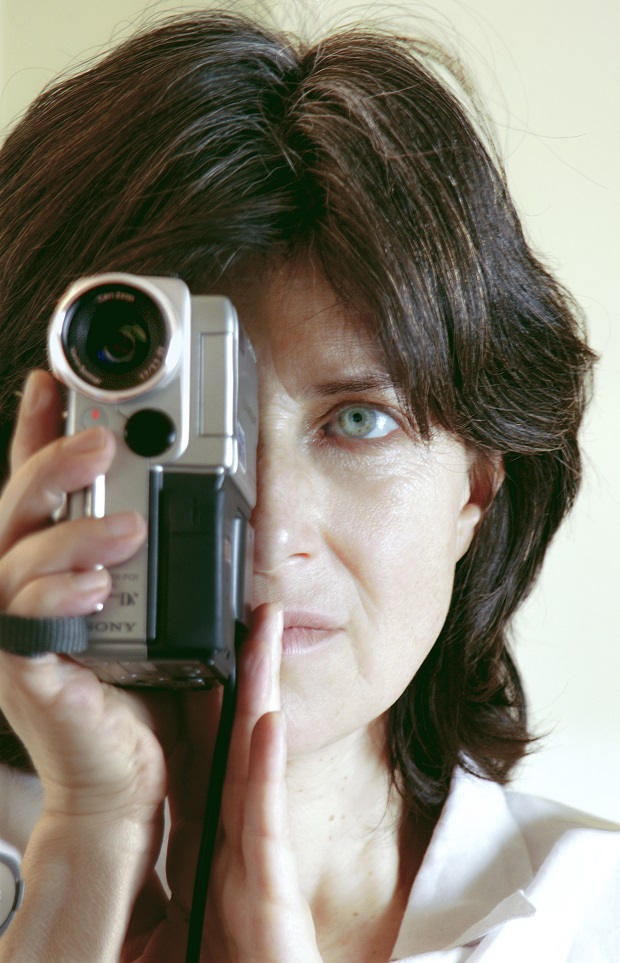
If she “left too soon”, laments friend and collaborator Marilyn Watelet, Akerman’s rigorous and non-mainstream body of work has never failed to inspire generations of filmmakers.
Her ongoing influence can be attributed to her determined search for a freedom of expression and an interrogation of the human experience that has lost nothing of its poignancy and pertinence.
The exhibition is accompanied by screenings of Akerman’s films at Cinematek, as well as a series of events and guided tours.
Chantal Akerman. Travelling
Until 21 July
Bozar
Rue Ravenstein 23
Photos: (main image) Akerman Chantal ©Jean-Michel Vlaeminckx-Cinergie Portrait; Credit Julie Pollet; Chantal Akerman; Credit Julie Pollet; Jeanne Dielman (set photo), photo Boris Lehman; Credit Julie Pollet; Credit Julie Pollet; Chantal Akerman © Adagp, Paris, SABAM, 2023












